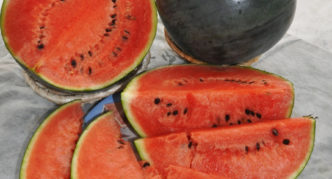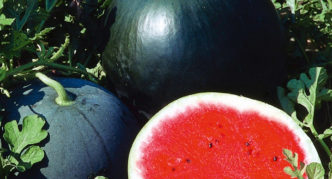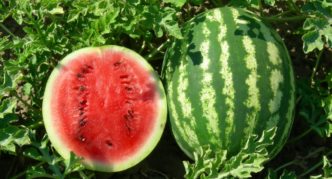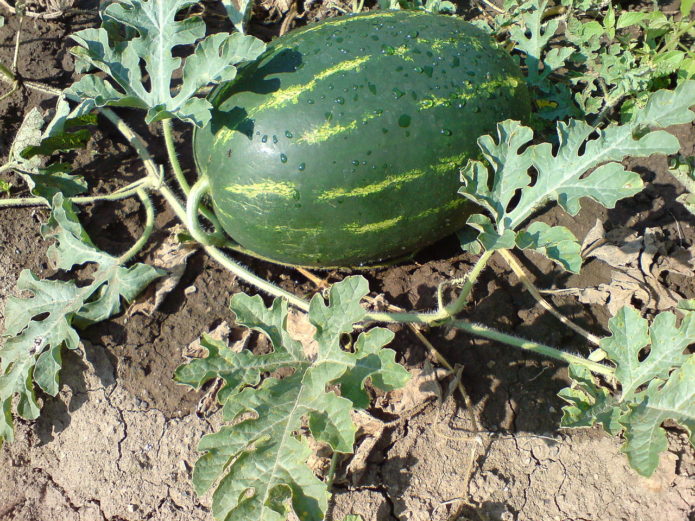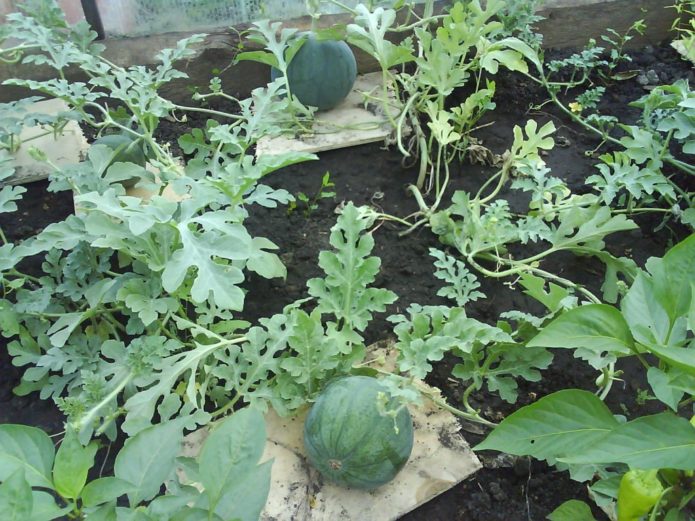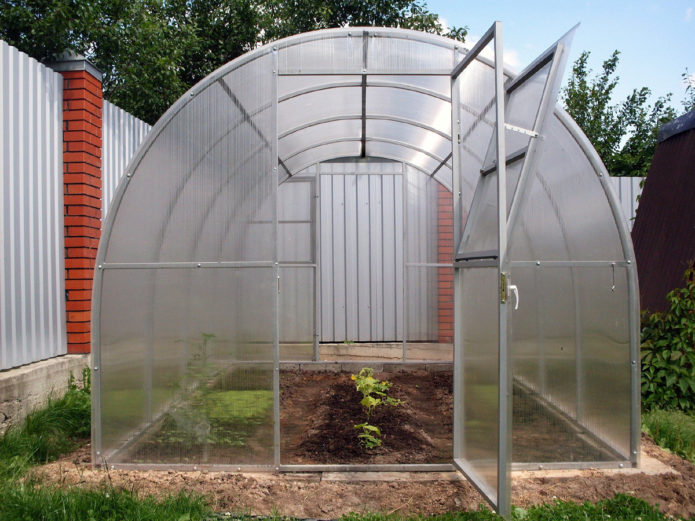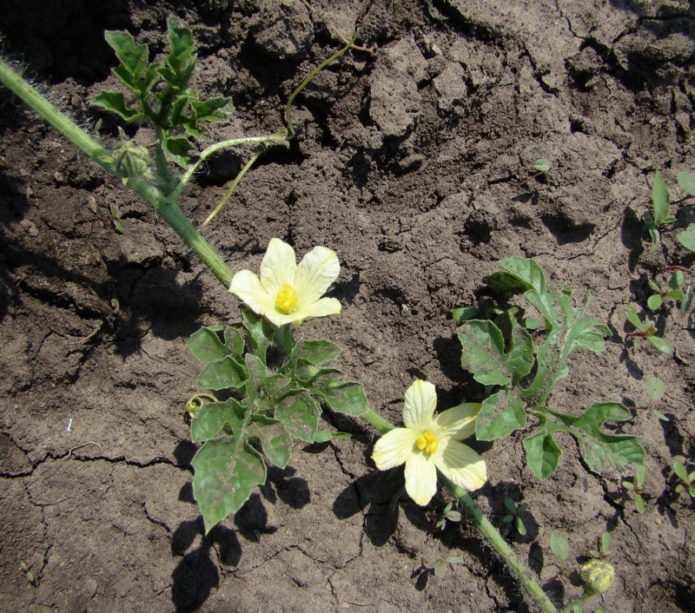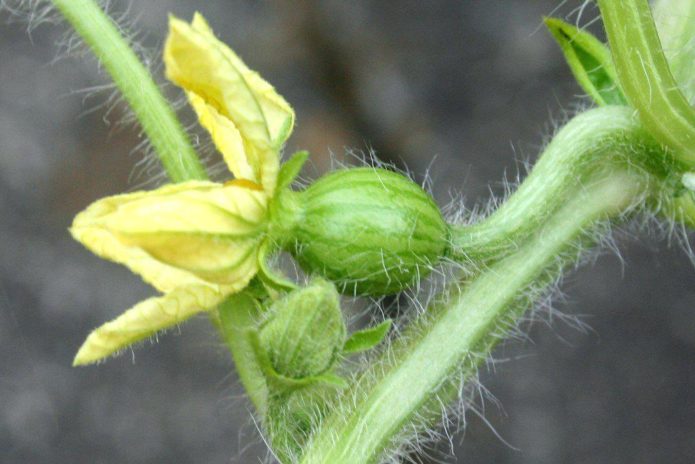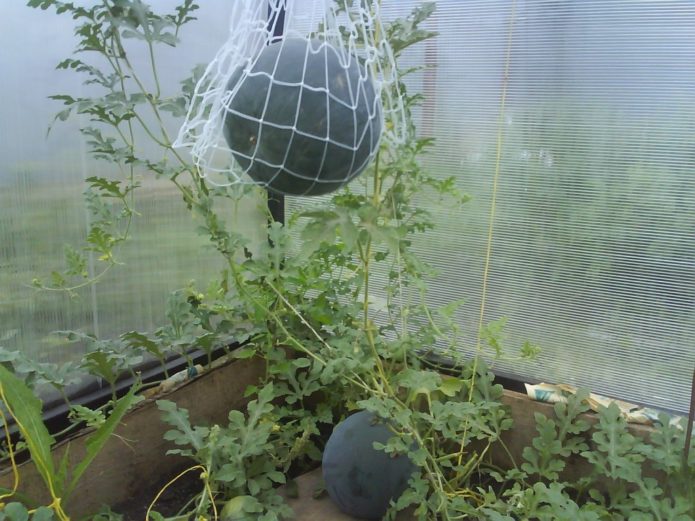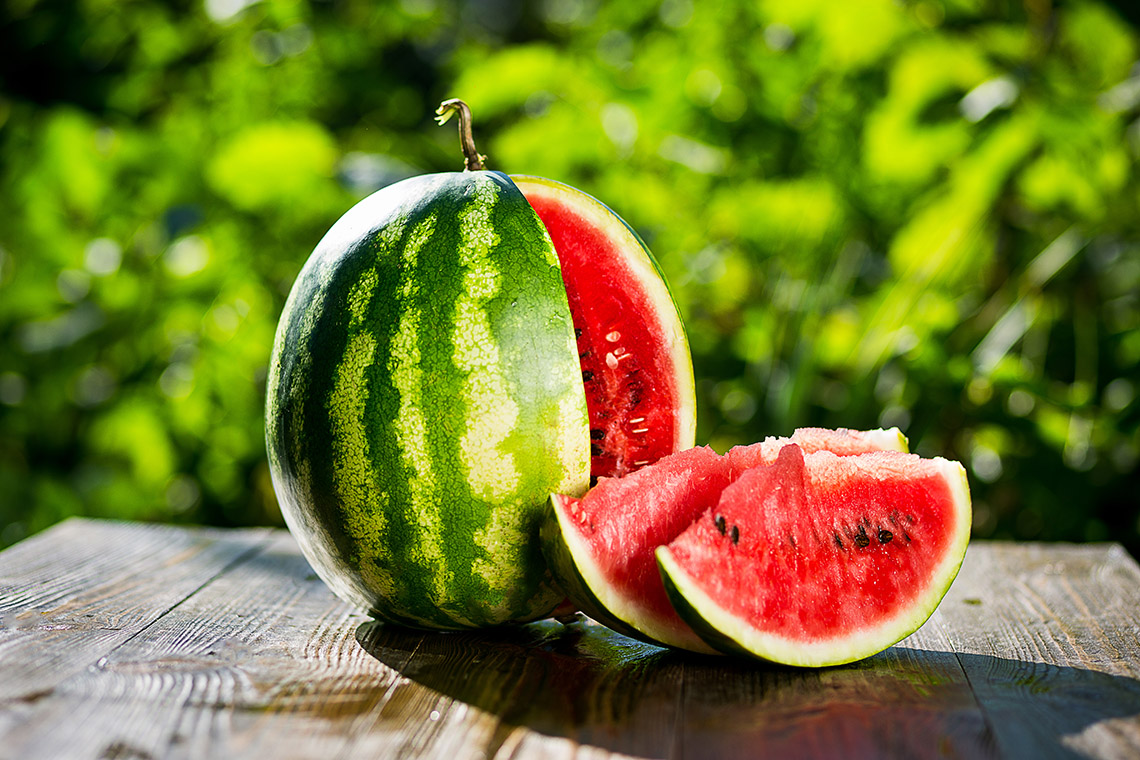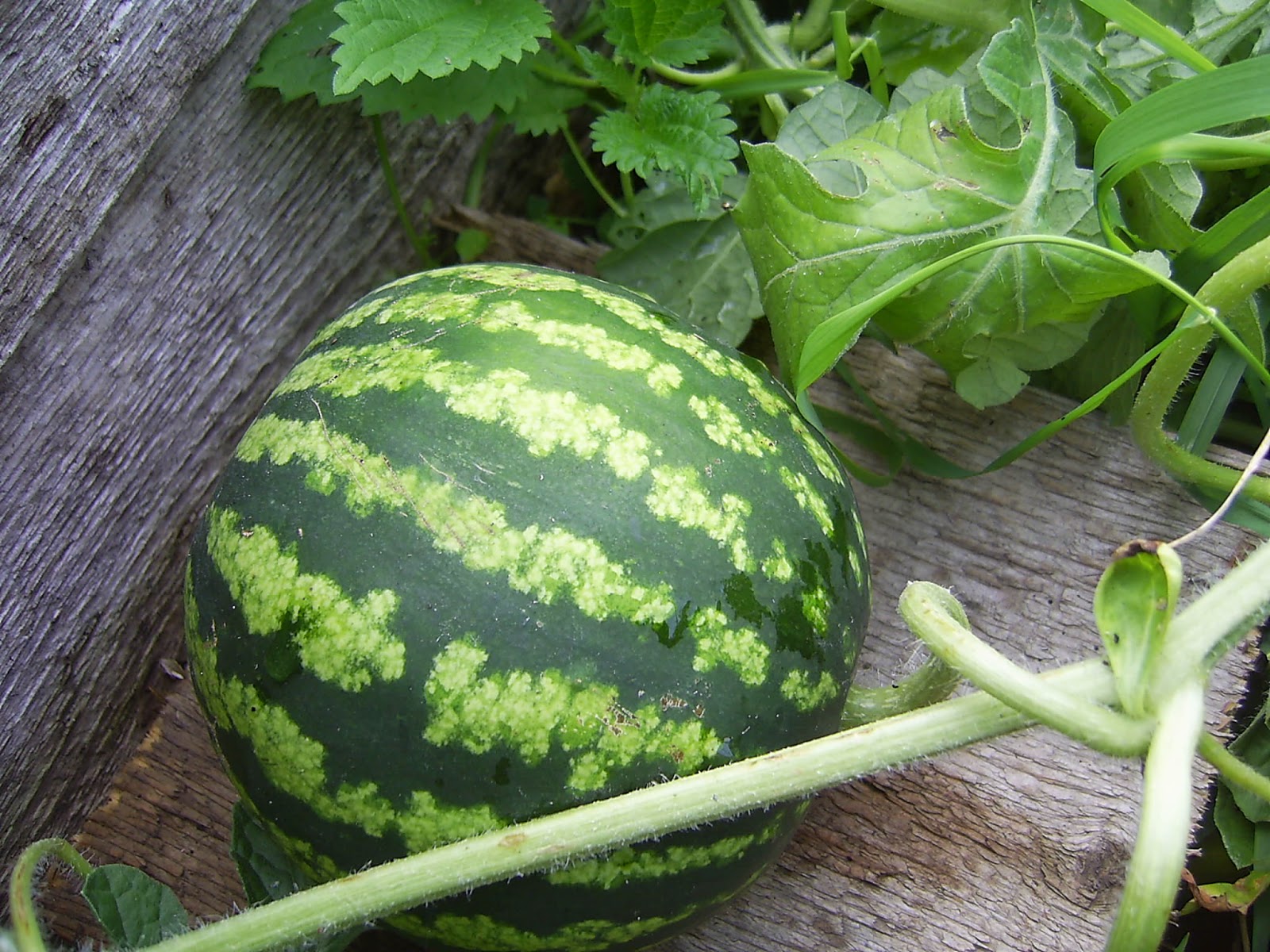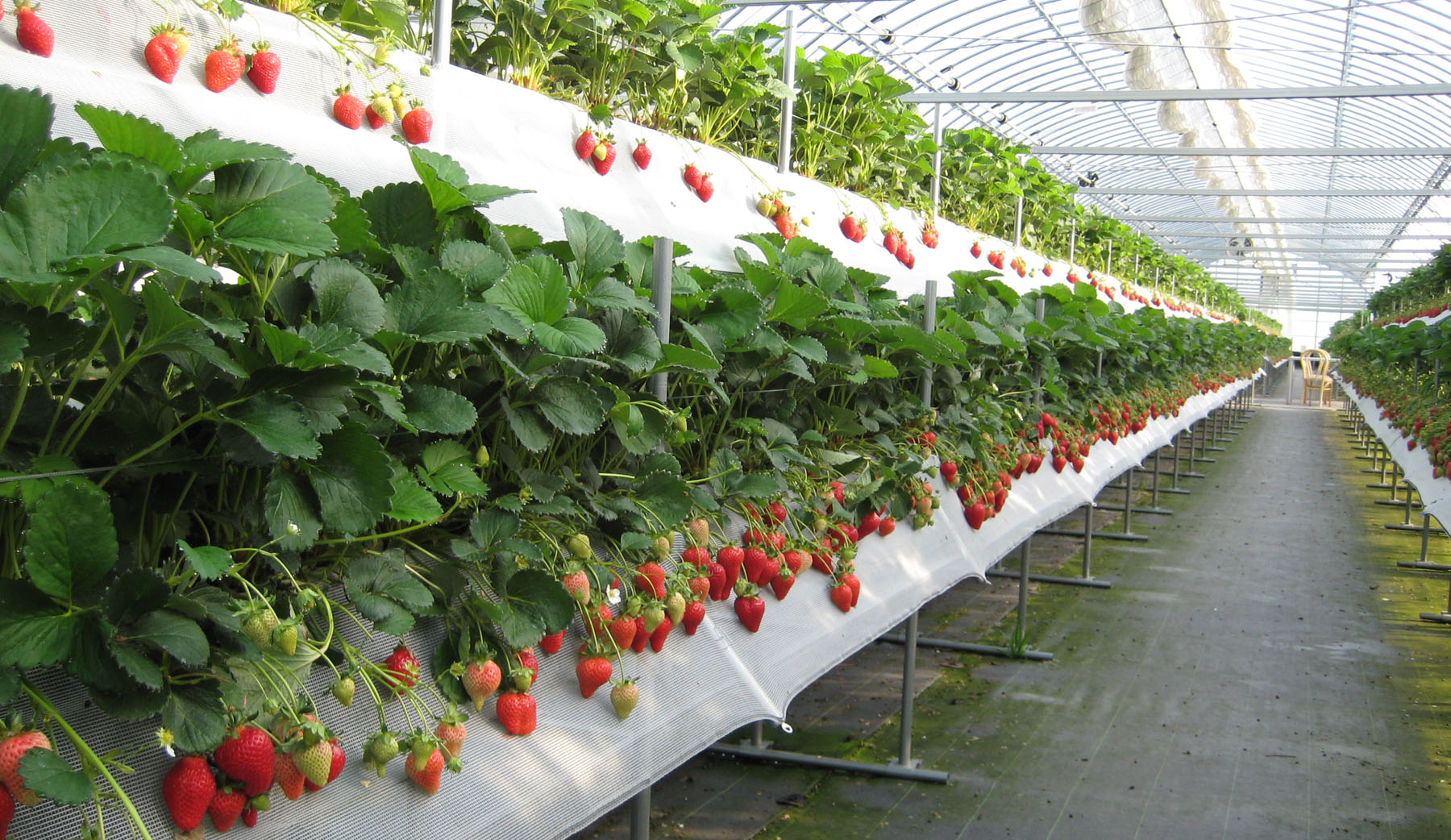Everyone's favorite watermelon is a traditional melon culture in the southern regions with a hot climate. The early ripening and hardy varieties created in recent decades have significantly expanded the boundaries of its cultivation, and now it is quite possible to get a harvest of your own watermelons even in the Urals.
Content
Watermelon in the Urals is real!
Ural watermelons have long become a reality. Many enthusiastic gardeners successfully grow these sweet fruits in the greenhouse and even outdoors.
The best varieties of watermelon for the Urals
Early ripening varieties of watermelon with not too large fruits are best suited for growing in the Urals.
Comparative characteristics of the best varieties of watermelon for the Urals - table
| Variety name | Ripening period | Days from germination to harvest | Main lash length in meters | Fruit color | Average weight of 1 fruit in kilograms | Fruit taste |
| Fire | Early | 71–87 | Up to 1.8 | Dark green almost solid color | 1,7–2,3 | Good |
| Suga baby (Sugar baby) | 75–85 | 2–3 | 1,0 | A great | ||
| Zenith | 73–94 | More than 3 | Striped blurry | 2,4–6,1 | Good to Excellent | |
| Crimson Sweet | 67–86 | Striped contrasting | 3,4–4,8 | A great |
The best varieties of watermelon for the Urals - photo gallery
- Watermelon Sugar Baby in English is called Suga Baby
- Watermelon Ogonyok - a legendary Soviet variety
- Watermelon Crimson Sweet is translated from English as "scarlet sweet"
- Watermelon Zenith tastes good to excellent
The yield and taste of watermelons
In practice, the real taste and yield of watermelons depend not so much on the variety as on the growing conditions and care, and above all on the weather. Hot dry summers - watermelons are smaller and sweeter, hot and wet - larger and more watery, damp and cold - will be small and tasteless, if they grow at all. If you leave only 1 fruit on the plant - 1 large watermelon will grow, leave 2-3 fruits - they will grow smaller, 4-5 fruits - it will be quite a trifle. The approximate total yield from 1 square meter ranges from 1-2 kilograms in a field without irrigation with free planting up to 10 kilograms in a greenhouse on a trellis with intensive fertilizing.
Preparing watermelon seedlings
Watermelon seeds for seedlings should be sown in late April or early May, about 1 month before planting seedlings in a permanent place. Watermelon does not tolerate transplanting well, so the seeds are sown one at a time in individual pots with moist, loose earth to a depth of 3 centimeters.
Modern high-quality seeds from the store do not need any additional heating, dressing, soaking.
Watermelon seed germination temperature +25 .. + 30 ° С. It is better to keep the growing seedlings on the lightest windowsill at + 20 ° C, so that they stretch less from a lack of light.Water it very sparingly so that the soil is only slightly moist.
Growing watermelons in the Urals in the open field
In the conditions of the Southern Urals, early varieties of watermelon have time to ripen in the open field, even with direct sowing of seeds to a permanent place in the last decade of May.
In the south of the Orenburg region, watermelon is a quite competitive field crop.
In the Middle Urals, it is safer to use pre-grown seedlings, which are planted in a permanent place in the first decade of June.
For planting a watermelon, choose the sunniest area with loose permeable soil of neutral acidity. The soil must be dug up with a uniform addition of fertilizers in the following dosage per 1 square meter:
- 8-10 kg of humus,
- 20-25 g of ammonium sulfate,
- 40-50 g superphosphate,
- 20 g of potassium salt.
The distance between rows and between plants in a row should be 1–1.5 meters. According to this scheme, holes are marked, in which 1 copy of the finished seedlings is planted, without deepening its stem, or 2-3 seeds are sown to a depth of about 5 centimeters. When sowing or planting, be sure to watered at the rate of 3-4 liters of water per hole.
If direct sowing of seeds was used, after the emergence of shoots, the excess plants are carefully cut at the root, leaving 1 copy in the nest. Watering the seedlings is enough once a week. The planted seedlings for the first 2-3 weeks need regular watering every 2-4 days. In this case, it is important not to allow water to enter the leaves and stems so that they do not rot. You only need to moisten the soil around the plants. The approximate watering rate is from 0.3 to 1 bucket of water per 1 plant.
Adult watermelon bushes, especially those grown by direct sowing of seeds into the ground without transplanting, form a very deep root system and can grow without watering at all, even in dry summers.
From the moment the fruits are set, watermelon plants are fed every 2 weeks with the following solution:
- 10 liters of water,
- 20 g of ammonium sulfate,
- 30 g superphosphate,
- 30 g of potassium salt.
The consumption of fertilizer solution is 2 liters per plant.
On each plant, no more than 2-3 ovaries are left on the main stem and lateral stalks, after which all excess ovaries are removed, and the tops of all shoots are pinched.
Watermelon fruits are harvested as they ripen, starting from the first - second decade of August.
The most reliable and versatile way to identify a ripe watermelon is the dried stem of the stem.
In September, before the frost begins, it is necessary to have time to collect from the beds all the watermelons, even not quite ripe, which can be used for pickling.
Using temporary film shelters
Shelter with plastic wrap or special breathable agrofibre protects plants from temperature changes and is especially recommended when planting watermelon seedlings grown in indoor conditions in the ground.
After a couple of weeks, when the plants take root, the shelter can be removed, or left for the whole summer. In very hot weather, the plastic wrap must be lifted from the edges for ventilation, so that the plants do not overheat. Agrofibre is good for air and rainwater, it can be left on for weeks, opening the bed only for planting care.
The moisture content under the film is higher than in the open field, and the risk of fruit rotting increases. To avoid this danger, small planks can be placed under the tied watermelons to protect them from direct contact with wet soil.
Features of growing watermelon in a greenhouse
Greenhouse watermelons, although not as tasty as ground watermelons, are less dependent on the vagaries of the weather. In stationary greenhouses, watermelon can be grown throughout the Urals, except for the polar regions.
In a greenhouse, a watermelon can be sown with seeds directly into the ground or planted with seedlings. This is usually done in mid-May. To use the greenhouse area more economically, planting distances are kept small (1 meter between rows and 35-50 centimeters between plants in a row) and a trellis up to 2 meters high is installed, to which watermelon lashes are tied as they grow.
Watermelon prefers dry air, so you should not plant it in the same greenhouse with cucumbers that need high humidity.
Caring for greenhouse watermelons is common: feeding and pinching, as in the open field, and watering once a week with 2-3 buckets of water per square meter. In extreme heat during the day, be sure to open the vents for ventilation.
If the greenhouse is closed and bees do not fly into it, watermelon flowers are manually pollinated. Pollen from male flowers that do not have an ovary, preferably from a neighboring plant, is transferred to the middle of female flowers with an ovary at the base with a soft brush.
When the set fruits become larger than the apple, they are placed in nets fixed on the trellis so that the growing watermelons do not break off under their own weight.
Watermelons in the Urals in a greenhouse - video
Reviews
I plant Suga Baby because he is my very first ripening, I also like Crimson Sweet - he grows by 8 kg from me.
Last year I planted the Sugar Baby watermelon for the first time. Planted with dry seeds on a 2-meter bed made from a compost heap. I fed and watered, did not form in any way. In August, 16 watermelons were filmed, not very large, but very sweet. Liked.
Ogonyok is a sort of early ripening - 90 days before the fruits ripen from seedlings - well, and the taste is, respectively, inherent in Ogonyok for 3+ or 4-. Of course, you can't compare with Astrakhan sugar watermelons - but still watermelon))
At first I also planted the light, then I refused .. the fruits are small, but very sweet .. and watermelons are prone to rotting ..
Zenith is early, the reddest of all, sweet, very tasty watermelon, but quickly overripe, approximately like a Spark.
Modern early ripening varieties of watermelon from experienced gardeners of the Urals successfully bear fruit not only in greenhouses, but also in the open field. With proper care, obtaining high yields of this southern melon crop is quite affordable for any Ural summer resident.
